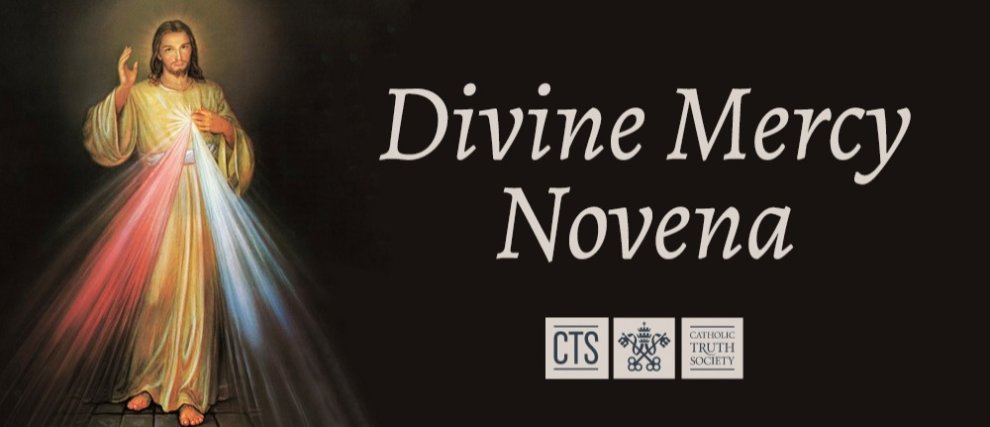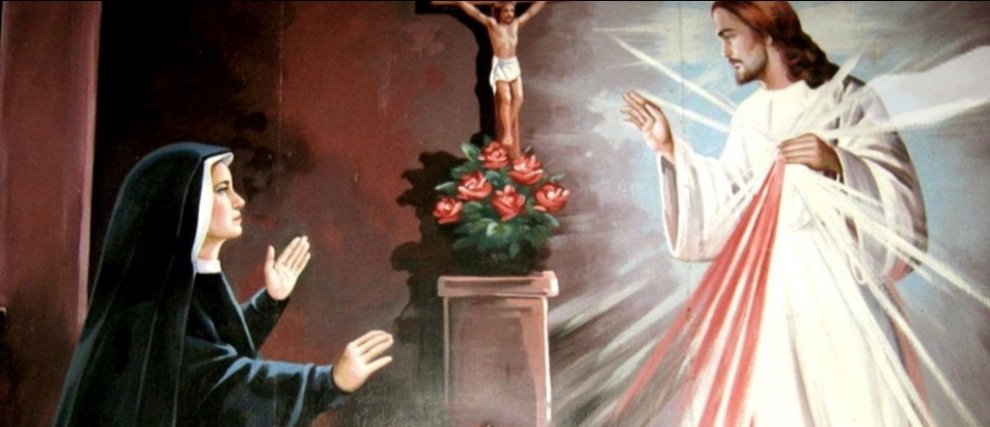Feast of Divine Mercy
The Feast of the Divine Mercy is celebrated on the Sunday following Easter Sunday: this day is called “Divine Mercy Sunday.” Instituted in the year 2000 by Pope John Paul II, the Feast of the Divine Mercy responds to the request that Jesus made to Sister Faustina during her private apparitions: to have a special devotion to His mercy on the second Sunday of Easter.
What is the Feast of Divine Mercy?
What is meant by “Divine Mercy”?
The term “mercy” comes from the Latin miseri, which means “poor,” and cor, which means “heart.” Thus, “to be merciful” is to have a heart turned towards the poor, that is, to be filled with compassion for all those who suffer. Saint Thomas Aquinas explains it as follows: “Mercy consists of having a heart made miserable by the misery of others.”
The Catholic Church teaches us that Divine Mercy is “God saddened by our distress” (Diocese of Paris). Pope Francis adds in this regard: “The mercy of God is not an abstract idea, but a concrete reality through which He reveals his love as that of a father and mother who are deeply moved by their child. It is right to speak of a ‘visceral’ love. It comes from the heart as a deep, natural feeling made of tenderness and compassion, indulgence, and forgiveness.” (Pope Francis, Bull of Indiction No. 6)
To understand the Feast of Divine Mercy, it is essential to know the core message Jesus conveyed to Saint Faustine during her numerous private apparitions. These apparitions are documented in a work titled "Petit Journal" (Little Diary), from which the following excerpts are taken: "I desire the Feast of Mercy to be a refuge and shelter for all souls, and especially for poor sinners. On that day, the depths of My mercy are opened; I pour out a whole ocean of graces upon souls who approach the fount of My mercy... The Feast of Mercy emerged from My very depths of tenderness. It is My desire that it be solemnly celebrated on the first Sunday after Easter." (Petit Journal, paragraph 699)
In instituting the Feast of Divine Mercy on the second Sunday of Easter, Pope John Paul II was simply responding to Jesus' explicit request. Besides setting the date of the celebration, Jesus also explained how to prepare for it and the purpose of the feast. On this day, Christ promised abundant graces: "every soul who confesses and receives Holy Communion shall obtain complete forgiveness of sins and punishment."
To understand the magnitude of Jesus' promise, Abbot Ignace Różycki explains: "The absolutely extraordinary grace of this feast surpasses all the graces of the six sacraments (seven, excluding baptism) because the remission of all sins and punishment is solely the sacramental grace of holy baptism. Yet Christ promised here the forgiveness of sins and punishment through the Holy Communion received on the Feast of Mercy, elevating it to the level of a second baptism."
What is the origin of the Feast of Divine Mercy?
The celebration of Divine Mercy Sunday dates back to the late 20th century in Poland: the Archdiocese of Krakow officially instituted it in 1985. Initially celebrated locally for about a decade, it was later extended to all dioceses under the guidance of Pope John Paul II and at the request of the Polish Episcopal Conference.
A few years later, on the day of Saint Faustine's canonization on April 30, 2000, the Holy Father established the Feast of Divine Mercy for the universal Church.
How does the Church celebrate the Mass of Divine Mercy?
Divine Mercy Mass is celebrated by the Catholic Church every year on the second Sunday following Easter. This day concludes the Easter Octave during which the Church celebrates the mystery of Christ's resurrection, as Divine Mercy originates from the Cross and Resurrection of Christ.
The Mass of Divine Mercy leads us to meditate on the Gospel of Saint John. Shortly after His resurrection, Jesus appears to the apostles and shows His wounds to Saint Thomas: “Put your finger here; see my hands. Reach out your hand and put it into my side. Stop doubting and believe.” (John 20:27). This passage from the Gospels manifests Christ's merciful love for each of us, despite the gravity of our sins.
The mass is often accompanied by a time of adoration or teaching. It is also an opportunity to administer the sacrament of the sick to those who request it. Often, the image of the Merciful Jesus is displayed in churches for this occasion. Some parishes, like Saint Sulpice Church in Paris, celebrate this event solemnly, leading to large gatherings.
Prayer to Jesus, the Merciful
“Lord Jesus, transform me into your mercy!
Make my eyes merciful so that I never judge based on appearances, nor suspect anyone, but always see the beauty in all souls and be helpful to everyone.
Make my ears merciful, always attentive to the needs of my brothers and sisters, never closed to their call.
Make my tongue merciful, so that I never speak ill of anyone, but always have words of pardon and comfort for all.
Make my hands merciful and full of charity, so that I take upon myself all that is hard and painful to ease the burden of others.
Make my feet merciful, always ready to rush to the aid of my neighbor, despite my fatigue and exhaustion.
Let me find rest in serving! Make my heart merciful, open to all suffering. Lord Jesus, transform me into your mercy!”
Pray the Divine Mercy with Hozana!
The Feast of Divine Mercy is a gift from Jesus to the world because on this day “the depths of His mercy are opened,” and great graces are distributed to all those who approach Him with humility! Thus, let yourself be touched by Jesus' infinite mercy for each of us and live this feast intensely by joining the prayer communities of Hozana:

